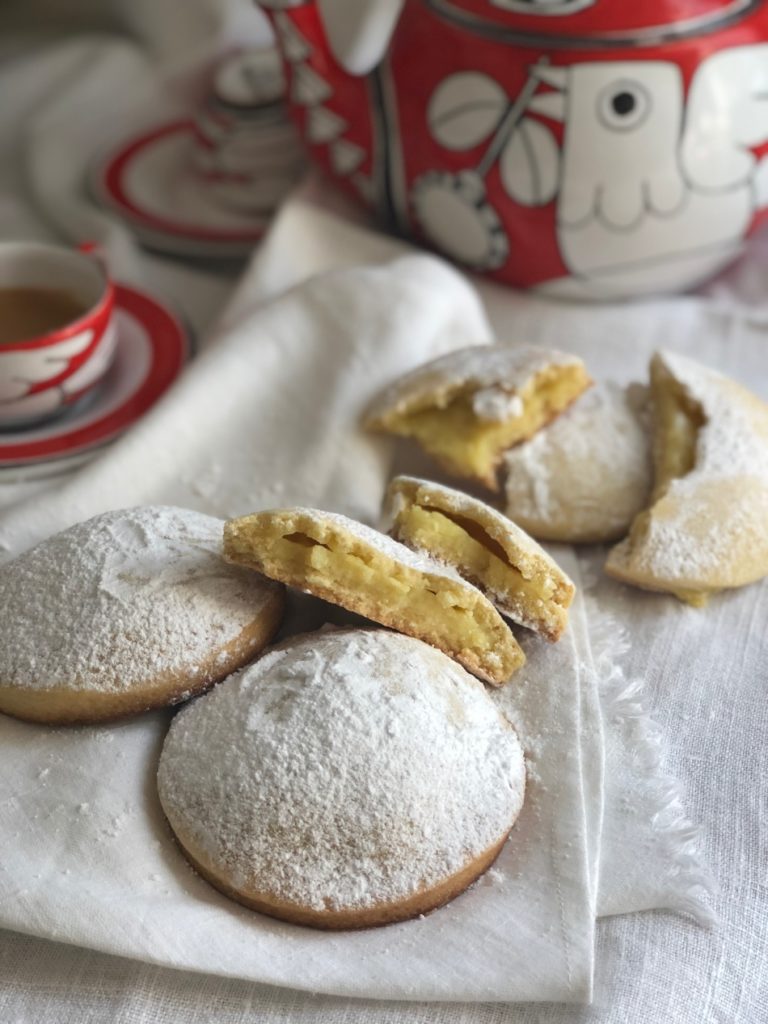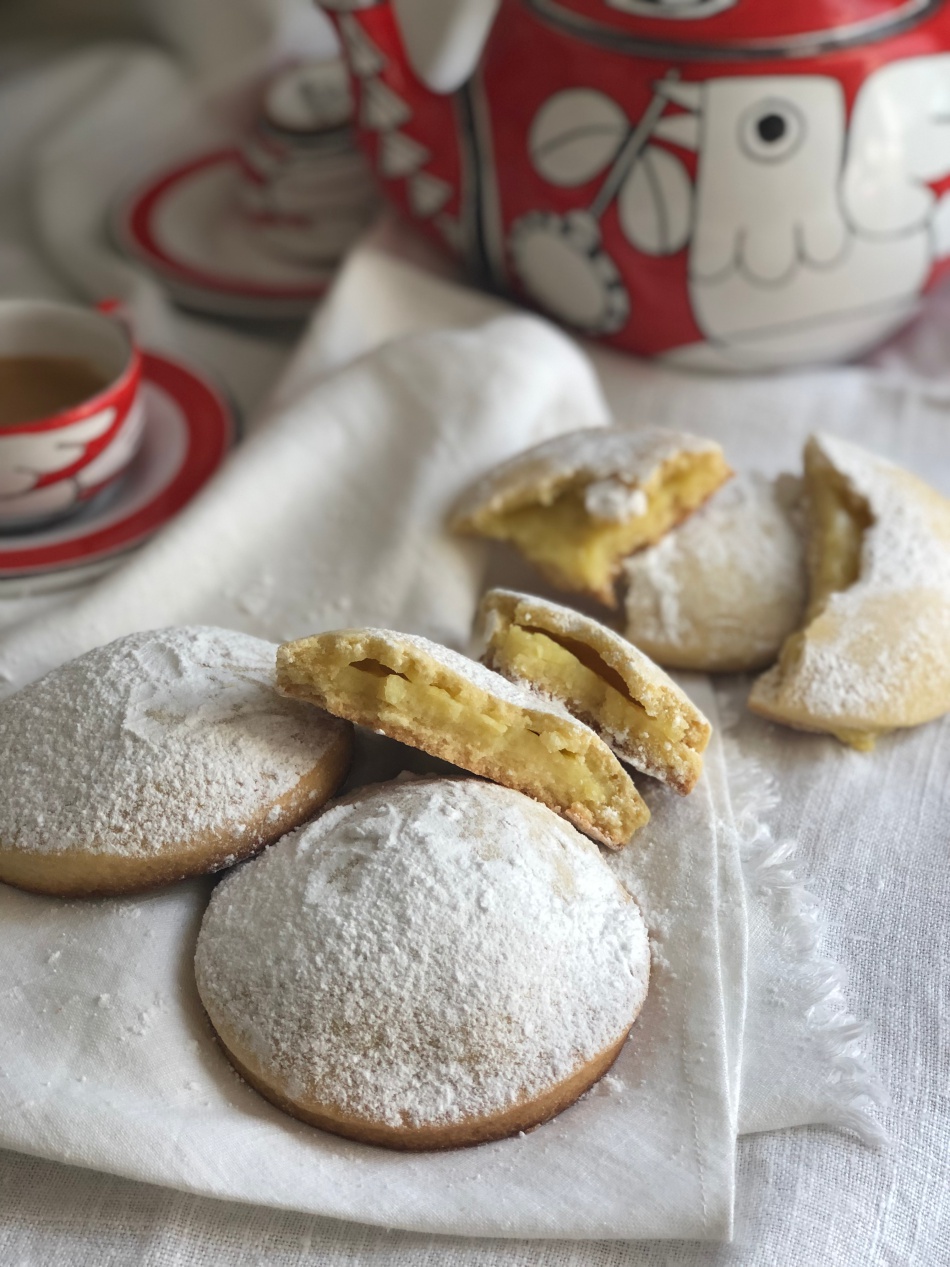
Gluttony is one of the seven deadly sins, so it’s at least surprising to discover that mostly of the traditional Sicilian desserts saw the light inside the Convents.
It seems that the Nuns alternated hours of meditation and prayers with an extraordinary activity inside spartan kitchens, grinding kilos of Sicilian almonds, boiling hot sugar syrup to prepare the famous “marzapane”, canning ciders marmalade, preparing aromatic and fruity “rosoli” (liqueurs).
It’s hard to have detailed information about the origin of this tradition, but seems that in 1798, in Palermo, there were 38 Convents producing desserts and we are sure than this baking activity increased after the Unity of Italy, when the Government confiscated Church property, so the Nuns began to sell embroidered textiles and desserts to sustain the Convents.
The Convents desserts were truly appreciated and, as usually happens with Sicilian pastries, they were prepared according with religious feasts or weddings.
Also for the nobles Sicilian families was usual to bring desserts to relatives and friends visiting each other and mostly of these sweeties were made by the Nuns.
Each Convent was known for a specific preparation, one for the cassata, another for the sweet cous cous; there were not cookbooks at that time, every single recipe was handed down orally from the older Nun to the younger one… and they were so jealous of their recipes, the recipes were secret and not one of them passed the Convent walls.
The extraordinary story of Maria Grammatico began inside one of these places, the San Carlo Monastery, in Erice.
Maria was just 11 years old when her father died, it was 1952, not a good period for the Sicilian economy, Erice was a small village and for Maria’s mother was really hard to grow 6 children alone.
So she decided to entrust Maria and her little sister to the Convent.
At that time Convents welcomed orphans providing food and a safe home.
But life inside the Convent was hard, the Nuns were hard, children spent the days praying and working, growing inside the walls without any contact with other people. Yes, they had food, just the necessary food, but not love for sure.
Maria started working in the kitchen, the work was heavy for a little girl, it was cold, it was necessary to wake up in the early morning to prepare the wood oven, then, after the prayers, she spent the day peeling kilos and kilos of almonds … or grinding them using a simple rolling pin.
The small Maria’s hands started to shape marzipan fruits an little decorated cookies that she could never eat.
Just some burned cookies, not good for selling, were offered to the kids.
But Maria was a smart girl, and she understood quickly that she had no choice, so she decided to draw from her experience more than she could, dedicating all her attention there, in the kitchen, learning how much was possible.
That was not easy! The Nuns needed kids working in the kitchen, but there were not available to teach them. The recipes had to remain secret! For this reason, they weighed the ingredients during the night while everyone slept. But Maria was there, spied the Sister in the dark, trying to memorize the weight of each single ingredient.
When Maria leaved the Convent, she was a young woman, she married but life has never been easy for her.
She decided to do something that was familiar to her: baking desserts.
Maria opened her first little pastry shop: a new adventure, without help, without money, when she started to produce dessert her money was enough to buy just three kilos of almonds!
It was 1964, the Pasticceria Grammatico is still open serving Monastery specialities and more than 25 people work with Maria during the high season; a beautiful working reality inside a little village like Erice.
You can find Maria there, seated at the marble table, and if you ask her about the “dolcini” original recipe, she will proudly answer you “I stole them to the Nuns!”
Maria speaks about her Monastery life with contradictory emotions, she’s grateful to the Nuns for growing her, but she can’t forget their rigidity, the absence of compassion for the poor people and the orphans.
Maria is happy to pass the Convent recipes to the new generations, she strongly believes, and I agree with her, that recipes are made to be shared: this is the only chance we have to keep alive our food tradition.
These little pastries are called “genovesi”.
A special short pastry made with all purpose flour and semolina flour filled with a delicate pastry cream flavoured with lemon zest.
Ingredients for about 16 pastries
For the dough: 250 g. fine semolina flour – 250 g. all purpose flour – 200 g. sugar – 200 g. cold butted, in small cubes – 4 egg yolks – some spoons of cold water if needed.
For the pastry cream: 2 egg yolks – 150 g. sugar – 40 g. corn starch – 500 g. full fat milk – half lemon zest
Icing sugar for serving.
For the dough: in a big bowl combine semolina and all purpose flour, add the sugar and the butter. Pinch the butter with the mix of flours and sugar until you have a mixture pretty similar to wet sandy. Add the egg yolks and the necessary water to stick the dough together.
Wrap the dough in a cling film and let it rest in the refrigerator for at least one hour.
During this time prepare the pastry cream. Warm the milk and set aside. Directly in a heavy pot whisk the yolks and the sugar until pale yellow. Add the sifted corn starch, always stirring. Add in the warm milk gradually, the put the pot with the cream on thestove again and cook at low flame until the mixture thinkens to a creamy consistency.
Out of the flame add the lemon zest, put the pastry cream in a bowl and cover with a cling film.
On a floury wooden surface roll the dough. Cut some rectangles 15 x 10 cm and ½ cm thick.
Place about 2 tablespoon of cold cream on half part of the rectangle and cover over the other half. Cut the “genovesi” using a pastry cutter or a glass. Roll the excess dough, knead it quickly and prepare more pastries.
Place the genovesi on a parchment paper lined tin and let it rest in the refrigerator. During this time pre-heat the oven 220° .
Bake the genovesi for about 7 minutes or until light golden.
Dust with icing sugar.
They are good fresh baked!
A Sicilian story, Maria Grammatico and the Genovesi pastries



